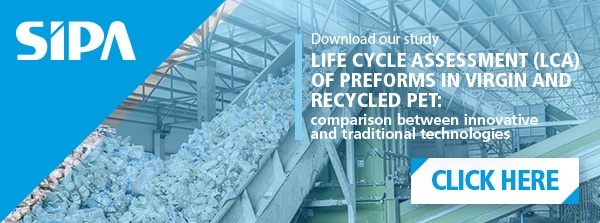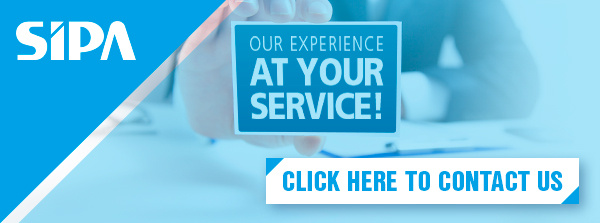Introduction
A first solution to the problems of excessive proliferation of plastics, as a result of specific measures - such as the EU Directive on Single-Use Plastics or imports blocking imposed by China - is to identify alternatives subjects to virgin PET.

PET bottle market trends: Bottles made with rPET
Among these materials, certainly there is the post consumer PET. New techniques make it possible to create bottles with different percentages of recycled PET for food and non-food.
Concerning this topic is useful to remember that European legislation under Regulation (EC) No. 282/2008 provided for the possibility of using post-consumer recycled plastics (those coming from the recycling of plastics) for packaging of food products, provided that the material is from a certified recycling process, and meets all the requirements for food contact. So PET bottle market will have to adapt to these directives as soon as possible.
In traditional systems using post consumer PET bottles, those are mechanical divided by color (colorless, blued, multicolored).
These are then converted into flakes through a multistep process: grinding, hot washing, flotation and spinning, although there are already modern plants able to optimize the different stages.
TECHNICAL STUDY: "PET packaging material: market trends and lightweighting factor"
Regulations on plastic reduction in the US and Japan
The PET lightweight process developed in parallel with the need not to affect the performance of the final product, since companies shall maintain specific properties of resistance, impermeability and stability of the bottles.
Actually, this is a process started already since the early years of this decade; the average weight of a half-liter PET bottle had already decreased by almost 50%, giving way to lightweighting.
PET bottles and preforms lightweight
The PET lightweight process developed in parallel with the need not to affect the performance of the final product, since companies shall maintain specific properties of resistance, impermeability and stability of the bottles.
Actually, this is a process started already since the early years of this decade; the average weight of a half-liter PET bottle had already decreased by almost 50%, giving way to lightweighting.
Lightweighting principles into preform
PET packaging lightweighting starts from preforms. It must be understood that the preform holds the quality of the final container; it is therefore the element to be taken into consideration to optimise a container.
In matters of optimization, we refer specifically to lightweighting, but this method also concerns the definition of new threads, the increase in productivity and cycle time, the expansion of the process window, and other performances.
It should also be remembered that lightweighting does not only concern packages, but also other parts of the bottles.
The most important parameters in designing a preform to reach container specifications are the following:
- Wall thickness
- Bottom thickness and design
- Total length
- Overall shape of the preform (e.g. reverse tapered, straight or bell shaped)
- Thread type and diameter
- Thread/neck thickness
- Under-ring diameter/thickness/transition area profile
- Thread height + heights between ring and flip-off seal
- Total weight
- Injectability
- Wall length and thickness ratio (L/t)
- Blowability (stretch ratio)
- Axial stretch ratio
- Radial stretch ratio
- Overall stretch ratio
Need more information? You can learn more about SIPA solutions for PET bottles lightwighting.
Principles of the circular economy linked to the production of new PET bottles
Many companies using PET packaging for bottles are wondering if there is a technology that can bring economic benefits and, at the same time, respect the environment.
The answer is yes: today you can make preforms or bottles made by 100% rPET, through a single production line like Xtreme Renew by SIPA Spa.
Traditional systems using PET flakes
In the Pet traditional recycling stream, plants start from the taking in charge of bottle bales to move to their selection, flakes cutting, flakes washing, then undergoing certain decontamination processes aimed to convert into rPet pellets.
This process involves the pelletizining and recrystallization steps, after which rPET is newly loaded and transported to the packaging company.
Breakthrough technology operating on the bottle-to-bottle principle
The essential part of these new systems is the production of food-grade bottles directly from washed flakes, in a single production cycle, completely skipping the r-pet pelletizing, storage, transport and subsequent production of preforms on the traditional injection molding system.
We are talking about a breakthrough technology, by SIPA, completely integrated with upstream and downstream systems. These systems allow, in addition to the aforementioned advantages, to obtain energy savings as well, since from the flakes to the preforms the process involves a single thermal cycle.
The machines operate through high vacuum decontamination capable of removing both moisture and migration materials. They reach high and stable values before the extrusion phase with a very short etruder screw and very large active filter surface able to reduce thermal stress.
The recycled material is filtered and ultra-clean, with approval from the certifying bodies FDA EFSA e Brand Owner.
The molten material is then directly connected to the Xtreme to produce preforms with the revolutionary injection-compression molding system that treat the melt with a feather touch with maximum flexibility as regards molds-change and system flexibility.
The overall advantages are the following:
- Reducing energy used
- Reducing CO2 released into the air
- Lowering transportation costs
- Less space occupied in the plant
- Reducing Total Cost of Ownership

